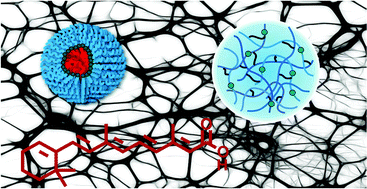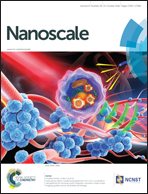Fluorescent polymeric nanovehicles for neural stem cell modulation†
Abstract
Nanomaterials are emerging as strong candidates for applications in drug delivery and offer an alternative platform to modulate the differentiation and activity of neural stem cells. Herein we report the synthesis and characterization of two different classes of polymeric nanoparticles: N-isopropylacrylamide-based thermoresponsive nanogels RM1 and P(TEGA)-b-P(D,LLA)2 nano-micelles RM2. We covalently linked the nanoparticles with fluorescent tags and demonstrate their ability to be internalized and tracked in neural stem cells from the postnatal subventricular zone, without affecting their proliferation, multipotency and differentiation characteristics up to 150 μg ml−1. The difference in chemical structure of RM1 and RM2 does not appear to impact toxicity however it influences the loading capacity. Nanogels RM1 loaded with retinoic acid improve solubility of the drug which is released at 37 °C, resulting in an increase in the number of neurons, comparable to what can be obtained with a solution of the free drug solubilised with a small percentage of DMSO.



 Please wait while we load your content...
Please wait while we load your content...